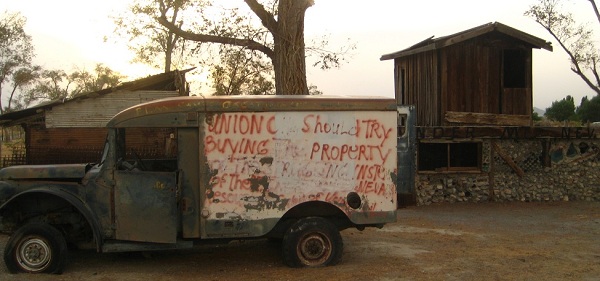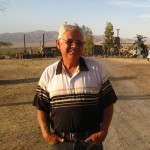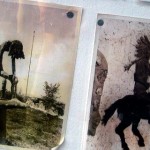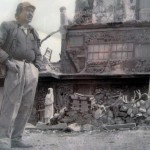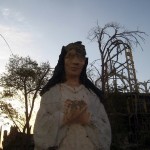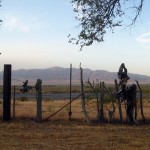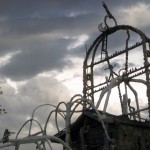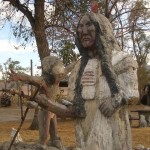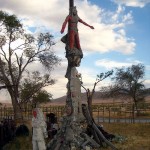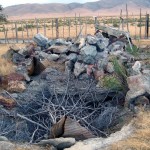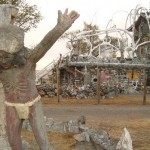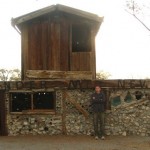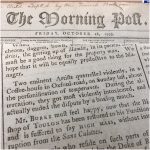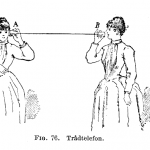
Chief Rolling Mountain Thunder’s “White Man’s Trash”
Art, Culture, NostalgiaPicture yourself back in 1968. You’re driving down the empty Nevada highway and your 1946 Chevy pickup breaks down. What’s your next move?
Very few of us would choose the path of Oklahoma-born Frank Van Zant. Most would figure out a way to get the truck repaired and be on their way. But Van Zant stayed. And I don’t mean that he camped out for a few nights, or even that he opted to secure more permanent digs in the nearby town of Imlay. He stayed right there in the middle of nowhere, on the side of the highway; he renamed himself Chief Rolling Mountain Thunder, and spent the rest of his life on the site.
By the 1980s he had built a homestead, scores of statues, and several other buildings (including a public bathroom, a sweat lodge, and a school), an epic monument to his artistic vision. Thunder built his cathedral (shown above) to reach high into the sky as an invitation to the legendary Thunderbird to one day return and carry his people away.
I first heard the story of Rolling Mountain Thunder while watching the film Living In The Big Empty. It’s hard not to be enchanted by such a unique story, but a question remained: Was Thunder a kook or a visionary artist?
After seeing his now-decaying ranch with my own eyes, I know the truth. Every block of cement, every structure, and every statue is a living fragment of an incredible artist’s manifesto. Thunder called his theme White Man’s Trash, and the entire place was built exclusively from discarded materials. Thunder’s life was full of meaning and his message will continue to resonate in the hearts of all who hear his incredible story.
Thunder’s son Dan keeps a guestbook onsite. I wrote that I would carry forward Thunder’s spirit. So here’s a picture of me declaring this intention (after I dunno how many hours of driving across the desolate highways of The Great Basin):







